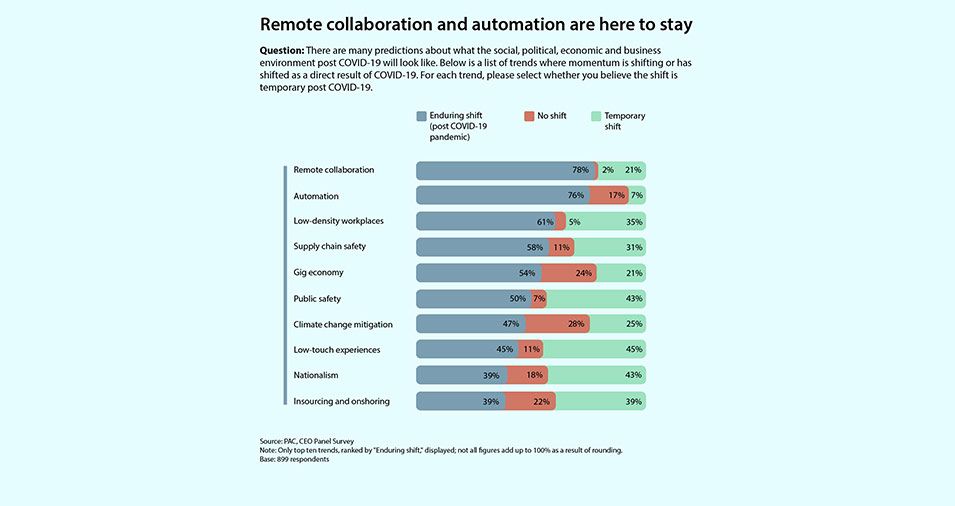


Describe your workspace needs and we’ll take care of the rest!

Summary – The win-win relationship between technology and the coworking space goes a long way. Sometimes all we need is a fresh perspective to see things hidden in plain sight.
Coworking began in a tiny one-room space in San Francisco by a software engineer named Brad Neuberg in 2005. There were many similar ideas in the air since 1995 when ‘hackspaces’ came to be in Berlin. However, it has been a minute since we’ve been in those old, good times of the late ‘90s or early 2000s. Today, as the circumstances call for a fast-evolving and flexible work-life, the future of workspaces needs to be ingrained with open, sustainable, and productive ideals that can be achieved with the current technological advancements.
As per CallisonRTKL, the pristine architects of prominent future-proof workspaces, residential areas, healthcare centers, etc. define Workplace 2.0 to be based on 3Ps:
The ability of workspaces to be sensitive towards the members’ psychological and functional needs. It defines the workspaces a human-centric dimension as well as ensuring their wellbeing as crucial for their performance.
Unlike all stereotypes, Workplace 2.0 is based on the elements of flexibility and evolution in every aspect. Yet, with new challenges springing up harder than ever, the dependence on technology to develop resilient, mobile, collaborative services has never been more imminent.
Community is the true goal of coworking 2.0 that can be genuinely attained when the members’ focus lies on the end target.
The PwC CEO Panel Survey shows how low-density workspaces can be a lasting change in most world regions. Such shifts can birth new opportunities to integrate flexibility, connectivity via tech-enabled, hybrid solutions. Some of such illustrations can be:

Credits: PwC
(The above graph represents the elements of coworking spaces that CEOs believe are here to stay – including low-density workplaces, public safety, automation)
Because of the low density, the work environment may require effective data collection, gathering, and evaluation to understand work progress through intelligent technology. That way, the operators can also have clarity in data collection, understand the scope of improvement and help build awareness.
For a coworking operator, the following instances can be implemented:
We rely on Visitor Management Systems (VMS) to effectively maintain and organize all entries at Zioks. This way, our visitors can have seamless and prompt access to any members and schedule appointments beforehand.
One of the significant concerns of business owners has to be the increased vulnerability of its workforce while accessing a shared space. With more weight placed on thermal screenings, Workplace 2.0 needs intelligent health monitoring systems across checkpoints yielding correct readings and maintaining records for observation of an anomaly.
Breakthrough innovation requires engaging, collaborative, and immersive work experience. However, because of the need for social distancing in future offices, it’s inevitable to provide the virtual equivalent of such productive workspaces that can be accessed anytime. As a team, there’s nothing more important than ensuring that everyone stays on the same page and works together.
Although reasonably new as a concept to the Indian coworking culture, unique work spaces are in pretty high demand – especially for their high-end, tech features, amenities, and a ‘wildcard entry’ to the affiliate network of industry giants.
British Land, a pioneer in property development and companies, envisions building campus environments where members can live, work, socialize, and shop as a mixed-use business. The blurring of the work and life has now fuelled the evolution of coworking that has:
As a niche coworking space in Kolkata delivering specialized coworking for the micro, small, and medium IT industry, we believe that coworking is soon becoming a lifestyle because of its heavy inspiration from flexibility. Not only can such environments provide work comfort, but it also paves the way for future sustainability.

We’ve got some big news! Zioks’ 3.0 at Millennium City, Salt Lake, is all set to be launched this July, and pre-bookings are now open! ...

Nearly half of regular office-goers worldwide complain about their office problems. However, coworking spaces do better than other workspaces at fixing challenges like that

Going through the pricing, design, amenities, office community and much more are crucial for renting a furnished office space when you’re ready to move in ...